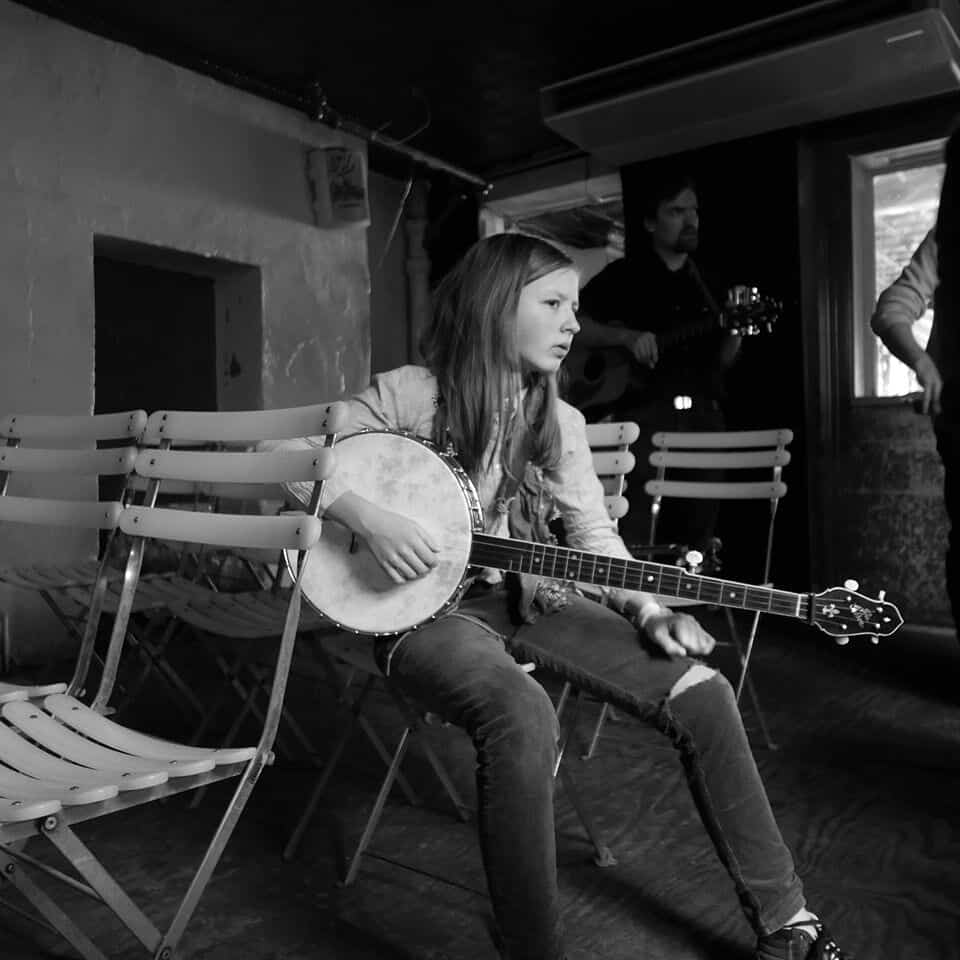At 14 years of age, Nora Brown is a talented banjo player who sings ballads and traditional music with an interest in eastern Kentucky and Tennessee styles. She uses the clawhammer method of plucking and strumming with her thumb and fingers, resulting in a deep, muddy tone that lends an air of dark mystery and timeless depth to her playing. (In contrast, the Scruggs style utilizes finger picks to produce a brighter, sharper tone more common in popular bluegrass.)
Brown has won prizes for her playing, been awarded scholarships to study, has taught beginning and advanced banjo, and appeared at numerous folk festivals throughout the United States. She effectively illustrates the differences between the fretted banjo and a fretless version to show the instrument’s African origins in a performance viewable on TED Talks (https://www.ted.com/speakers/nora_brown).
Red Hook’s Jalopy Records has released her first studio album Cinnamon Tree, produced by legendary musician Alice Gerrard and recorded at Studio 808a, an old farmhouse in Floyd, Virginia. The songs, stories and instrumentals on this record draw the listener in. Brown is joined on several songs by award-winning fiddler Stephanie Coleman, whose sunny tone brings a welcome lightness to the album.
 This album represents Brown’s journey over the last several years as she has found her voice, developed a distinct and compelling style, and emerged as a wonderful musician. The title of the album itself is emblematic of her musical pilgrimage; at first she heard the lyric as “cinnamon tree,” but today Nora knows that the song lyric is “’simmon tree” – a slang shortening of “persimmon.”
This album represents Brown’s journey over the last several years as she has found her voice, developed a distinct and compelling style, and emerged as a wonderful musician. The title of the album itself is emblematic of her musical pilgrimage; at first she heard the lyric as “cinnamon tree,” but today Nora knows that the song lyric is “’simmon tree” – a slang shortening of “persimmon.”
These songs were learned by Brown by listening to old recordings in archival collections and by visiting elder musicians in her hometown of Brooklyn, eastern Kentucky, southwestern Virginia, and North Carolina – including master banjo player and former coal miner Lee Sexton and scholar and master banjo player George Gibson.
About Brown, the late John Cohen said, “In her playing, an intense involvement is revealed as the music appears to wash over her. She sings of experiences way beyond her years, old songs from Appalachian sources, stories that reflect a more difficult way of life.”
Cinnamon Tree is available via digital download and on vinyl in a limited first edition of 500 copies, pressed at Third Man Pressing in Detroit, signed and numbered with custom letterpress jackets. The release of the album will be accompanied by a performance at 8:30 pm on Friday, November 8 at the Jalopy Theatre. For tickets and information, go to http://jalopytheatre.org
To learn more about Nora Brown, find her on Facebook and hear her on Bandcamp: https://jalopyrecords.bandcamp.com/album/cinnamon-tree.










One Comment
Really nice reporting Mike. Expect to hear more from Nora; maybe you could set something up in Norfolk along with some other performers like Haystacks.